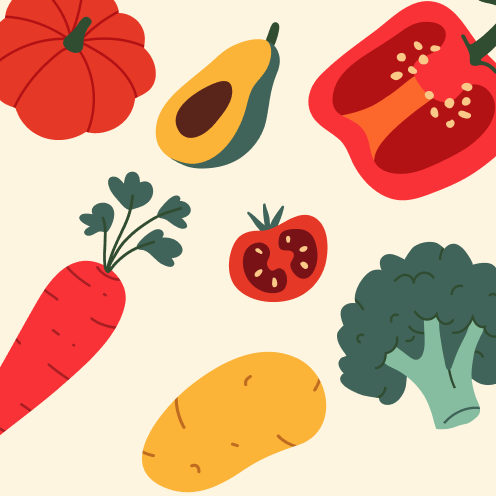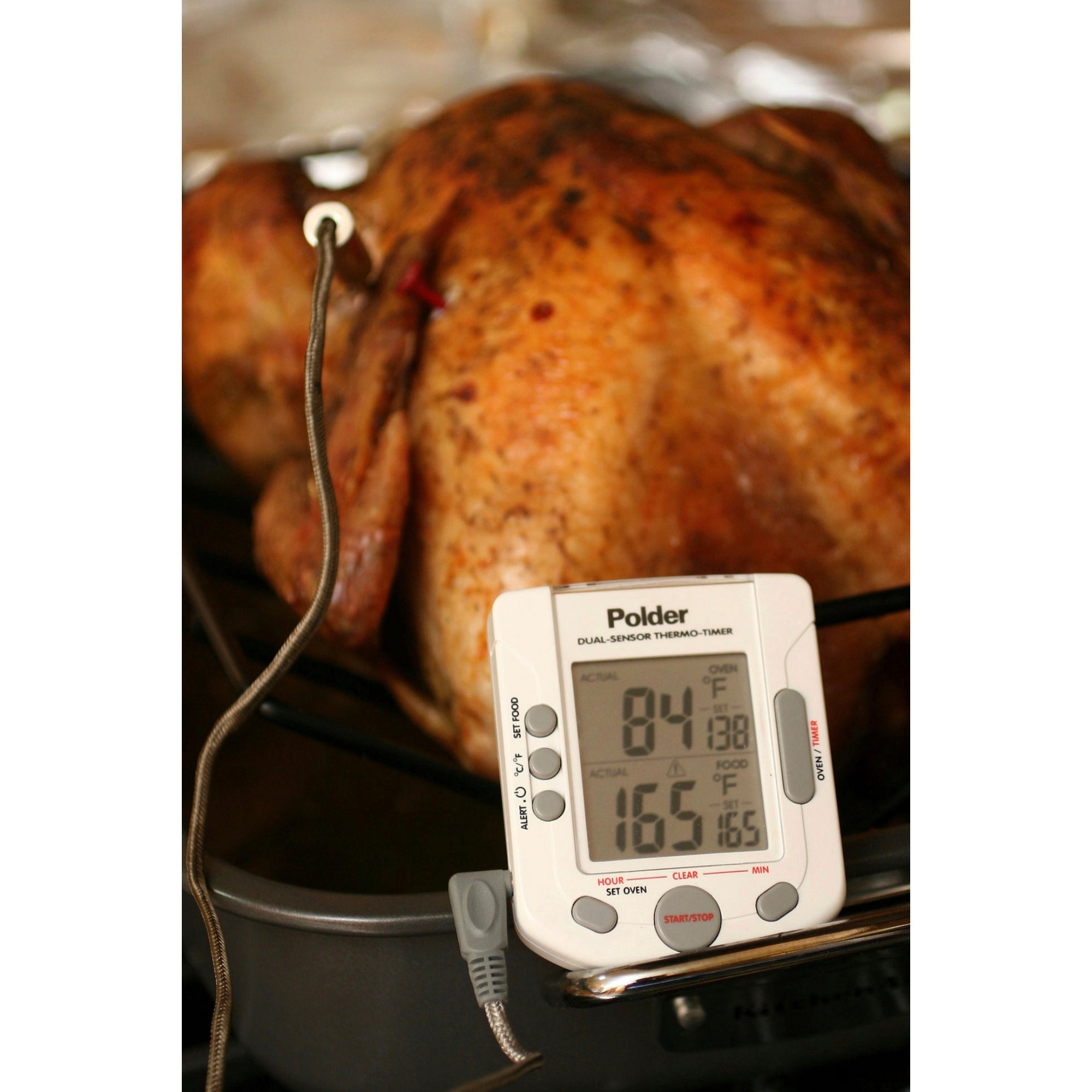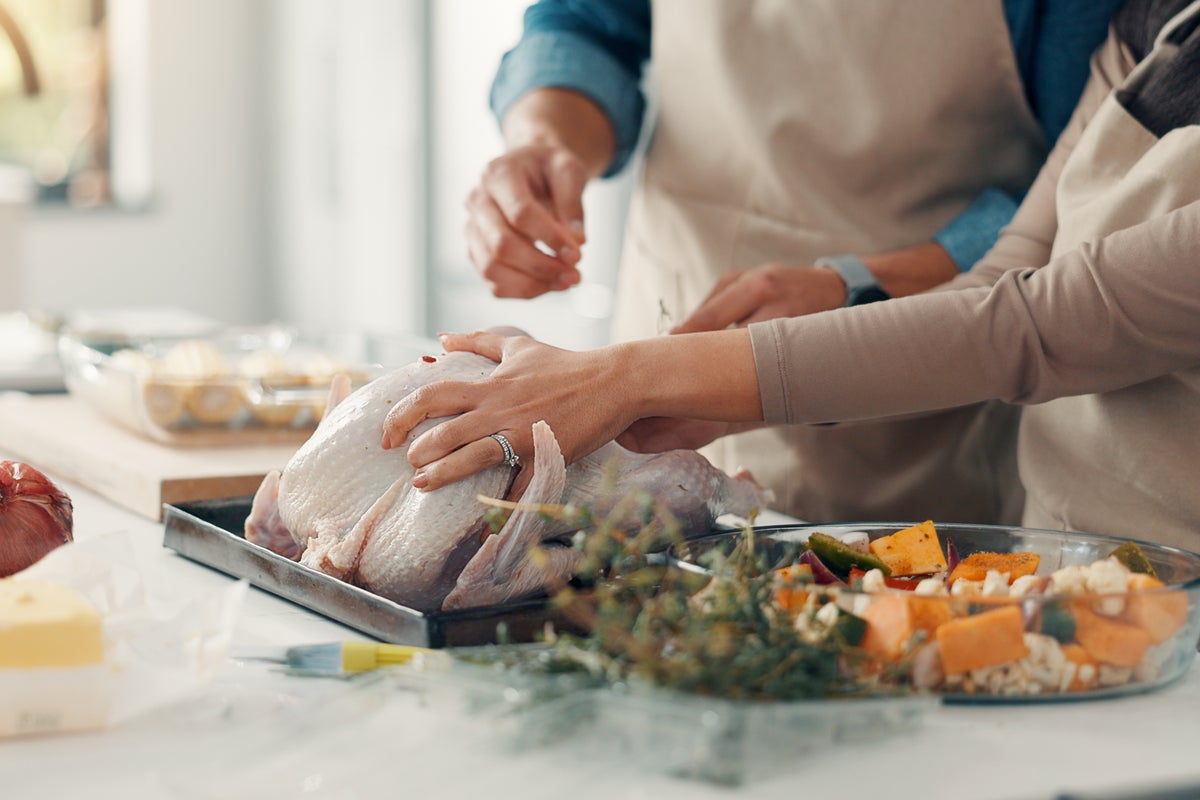- Lifestyle
- Food and Drink
Experts say one tool is a ‘non-negotiable’ for perfectly cooked turkey
Jonel AlecciaThursday 27 November 2025 11:45 GMT
 CloseHow did Thanksgiving dinner grow into what it is today?
CloseHow did Thanksgiving dinner grow into what it is today?
Sign up to IndyEat's free newsletter for weekly recipes, foodie features and cookbook releases
Get our food and drink newsletter for free
Get our food and drink newsletter for free
 Email*SIGN UP
Email*SIGN UPI would like to be emailed about offers, events and updates from The Independent. Read our Privacy notice
As Thanksgiving week dawns, home cooks across America are confronting the formidable culinary challenge that lies ahead.
This food-centric holiday sees over 90 per cent of the US population celebrating, with more than one in four attending meals involving over ten guests, according to the Pew Research Center.
Under such considerable pressure, any host would naturally seek the best tools to ensure their holiday dinner proceeds without a single hitch. With this in mind, we asked national food safety experts to identify the indispensable kitchen devices and aids crucial for guaranteeing a safe and delicious Thanksgiving feast.
Here are their top four suggestions for aids that can make or break your holiday dinner, plus two bonus tips for after the meal:
Digital meat thermometer
Our panel of experts unanimously agreed that an instant-read digital thermometer is vital to making sure roast turkey and other dishes reach 165 degrees Fahrenheit (74 degrees Celsius) to eliminate the risk of food poisoning from germs like salmonella and Campylobacter.
 A turkey is roasted with the help of a thermometer (AP Photo/Larry Crowe, File)
A turkey is roasted with the help of a thermometer (AP Photo/Larry Crowe, File)“This is non-negotiable,” said Darin Detwiler, a Northeastern University food safety expert.
“A reliable thermometer ensures you’re not guessing, because guessing is not a food safety strategy.”
Color-coded cutting boards
In the hustle of a holiday kitchen, the risk of cross-contamination is real. That’s when germs from one food, such as raw turkey, may be spread to other foods, such as fresh vegetables or fruits.
It’s best to use dedicated cutting boards for each type of food, and color-coding — red for meat, yellow for poultry, green for veggies — can help, said Barbara Kowalcyk, director of the Institute for Food Safety and Nutrition Security at George Washington University.
“I try not to use wooden cutting boards,” said Kowalcyk, noting that they can retain bacteria that thrive and grow to large enough quantities to cause illness.
Sharp knives
As an emergency medicine doctor who has stitched up many Thanksgiving injuries, Dr. Tony Cirillo urges home cooks to make sure their kitchen knives are sharp.
A sharp knife cuts cleanly, while a dull knife requires more pressure that can cause dangerous slips, said Cirillo, a spokesperson for the American College of Emergency Physicians.
Sturdy roasting pans
Pulling a hot turkey out of the oven is tricky, especially if the pan you cook it in is flimsy, Cirillo added. Use a sturdy metal roasting pan or, in a pinch, stack two foil roasting pans together for strength.
“I’m a big fan of double-panning,” Cirillo said. “Dropping the turkey is generally not good on Thanksgiving.”
Cooking timer
Just as important as getting food to the table is making sure it doesn’t sit out too long, said Don Schaffner, a food safety expert at Rutgers University.
Use a cooking timer or clock alarm to make sure to pack away leftovers within two hours to prevent bacterial growth that can cause illness.
Ruler
And when you’re storing those leftovers, make sure to put them in shallow containers, Schaffner said.
Measure using a ruler — or even the short side of a credit card — to make sure that dense foods like stuffing and sweet potatoes reach a depth of no more than 2 inches (5 centimeters) to allow for quick and complete cooling in the refrigerator.




